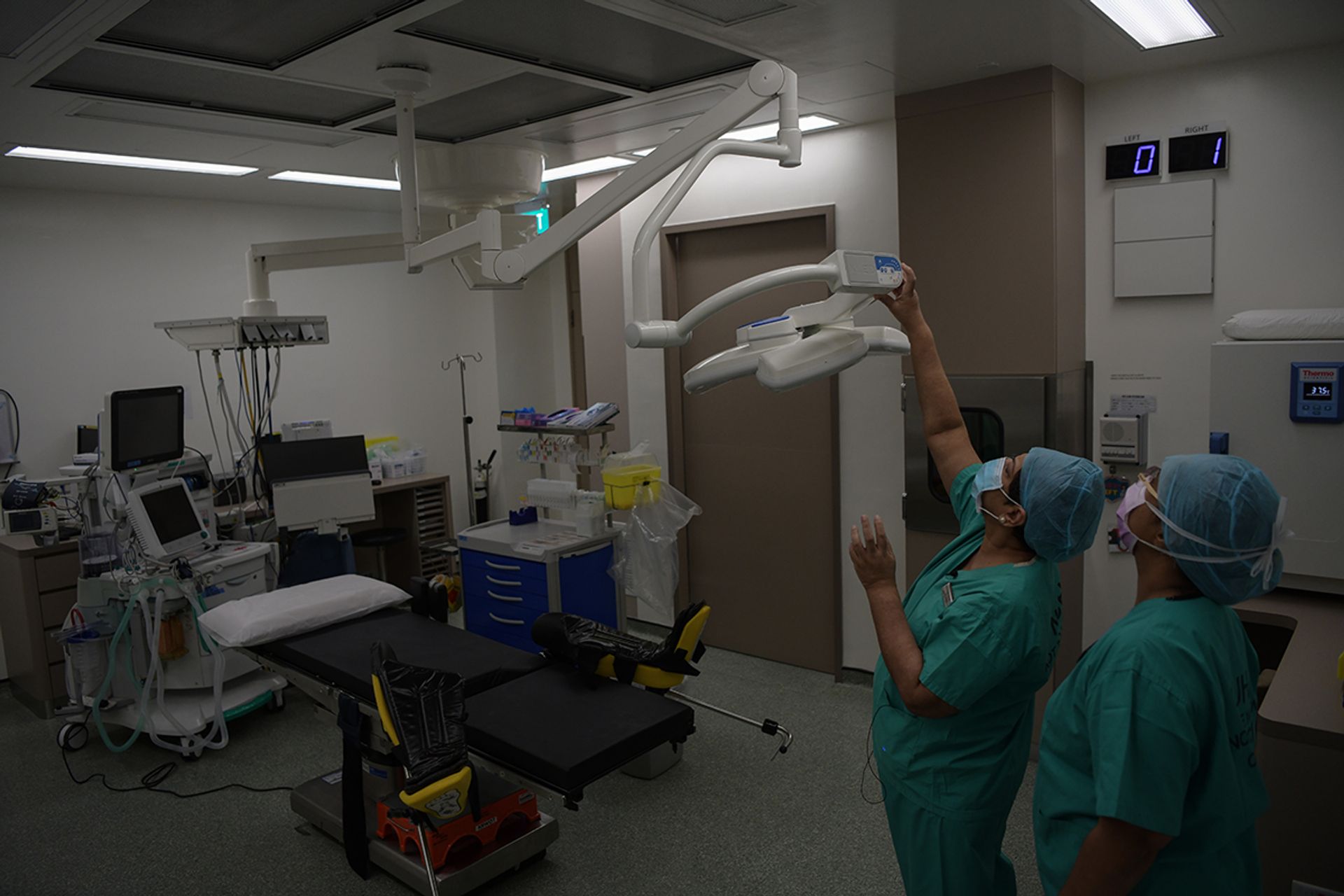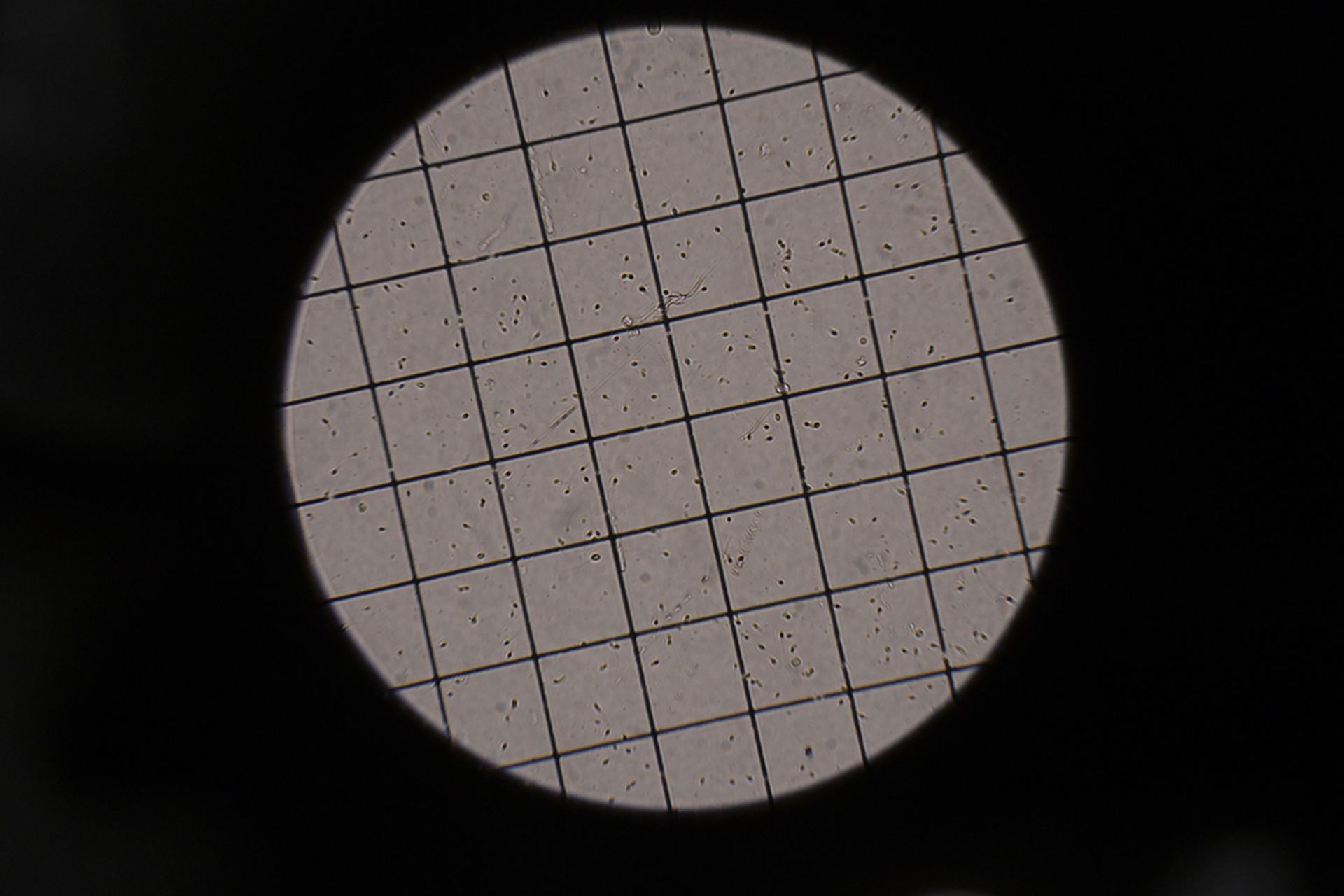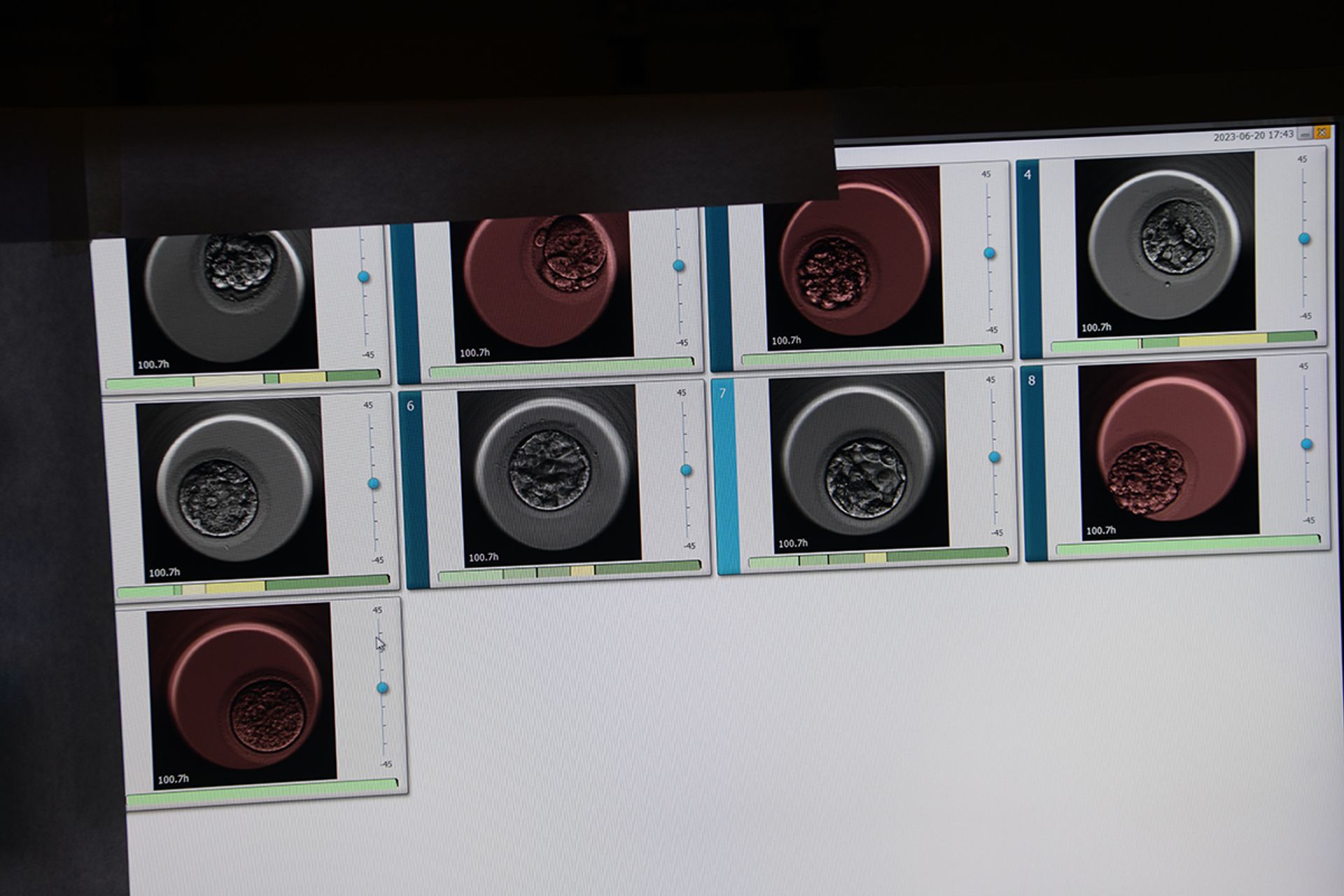In a corner of the National University Hospital (NUH) Kent Ridge Wing Operating Theatre, a team of embryologists work in a darkened, pressurised laboratory that resembles a womb.
The 10 members, who work on women’s eggs for freezing and in-vitro fertilisation (IVF), are not allowed to wear fragrances or nail polish, which can release volatile organic compounds (VOCs) into the air. The air purity in this 159 sq m space is checked daily.
The lab expects to see more procedures since egg freezing has been extended as an elective procedure to all women between the ages of 21 and 37 since July 1– a major policy shift that came after years of deliberation.
Previously, elective egg freezing was only allowed for medical reasons such as fertility preservation before undergoing chemotherapy.
In May, the Government also said it would raise the age limit from 35 to 37.
Chief embryologist Joyce Elizabeth Mathew (below) told The Straits Times in an exclusive tour of the IVF lab: “We work in the dark because we try to mimic what goes on in the womb…”

“The very least we can do is make sure that we keep the specifications and the parameters optimal for good embryo quality, because the patients have invested their emotions and their money into this.”
KEEPING IT CLEAN
Before entering the lab, all staff and visitors must go through an air shower for decontamination. Loose particles are blasted off their uniform and body surfaces, to maintain the lab's clean room environment.
About 20 women have made enquiries since this announcement, said Professor P. C. Wong (below), head and emeritus consultant at the Division of Reproductive Endocrinology and Infertility at NUH’s Department of Obstetrics and Gynaecology.

How the eggs are harvested
Embryologists aim to get about 20 eggs from each patient to improve her chances of a successful pregnancy. For most patients, just 10 to 15 eggs can be retrieved per cycle, meaning many have to go through multiple stimulation cycles. Older patients may retrieve even fewer eggs.
The woman is taught to administer daily injections containing hormones from the second day of her menstrual cycle, to stimulate her ovaries to produce eggs.
On Day 6, she returns to the clinic to undergo an ultrasound scan and a blood test to monitor the growth of her follicles, which contain the eggs. She also begins taking another daily injection to ensure she does not ovulate, which is when her ovaries release an egg.
The eggs mature around Day 14. A trigger injection is given to the woman to ensure her eggs are mature for retrieval.

In about 36 hours, her eggs will be retrieved in a procedure performed under general anaesthesia. This entails a doctor guiding a long, thin needle through the woman’s vagina and into each follicle to draw out each egg, which is a single cell around 0.1mm in diameter.
The eggs are handed over to the embryologists in the IVF lab in test tubes through a hatch that the operating room and the IVF lab share.

In the lab, the embryologists identify and isolate the eggs under a microscope on a bench that is kept just above 37 deg C so that the eggs are kept at body temperature.

The eggs are then dehydrated by exposing them to cryoprotectants, which prevents ice crystals from forming when the eggs are frozen, as this could damage the eggs.

The eggs are then distributed onto several thin plastic devices, which are frozen using vitrification.
This involves submerging the plastic strips in liquid nitrogen, which rapidly brings the temperature of the eggs to minus 196 deg C in minutes, ensuring a high survival rate.

Up to 150 patients’ eggs and embryos are stored in a tank.


Prof Wong, who has over 40 years of experience in fertility, said: “As a woman gets older, both the quantity and the quality of the eggs drop. That’s why we say, try to go early and do it when you’re young.”
Freezing the eggs arrests biological ageing of the eggs, Ms Matthew said.
If required, the woman will undergo the next stimulation cycle when her next period begins.
NUH charges $10,000 for each cycle, and storage is $700 per year. There are no government subsidies for elective egg freezing.
Using the eggs
In Singapore, only legally married couples can use their frozen eggs to try for a baby through IVF.


The fertilised egg is then placed into a time lapse incubator.
TRACKING GROWTH
It allows embryologists to track the fertilised egg’s growth until it forms a blastocyst, which is a cluster of cells and the furthest an embryo can grow outside the human body.
The blastocyst can then be sent for genetic testing, frozen or implanted in the patient's womb.
With genetic testing, the IVF Lab performs embryo biopsy, where a laser is used to cut samples of the embryos to be sent to the Preimplantation Genetic Diagnosis Centre.
Associate Professor Samuel Chong (below), the director of the centre, said the pre-implantation testing can select embryos that have normal chromosomes, allowing the best chances of a normal pregnancy.

This is similar to prenatal testing, but without parents having to make a difficult decision to terminate the pregnancy should abnormalities be formed, he added.

“If we detect an abnormality in the embryo, we will advise that it is not transferred, because it is not likely to lead to a good outcome,” he said.

Selected embryos are then implanted into the woman’s womb by a clinician, and the woman takes a pregnancy test two weeks later to see if she is pregnant.
But not all women become pregnant at this stage.
Prof Wong said the success rate of getting pregnant through IVF is about one in three and is largely dependent on how old the woman is when her eggs are retrieved.

Women seeking to undergo egg freezing at NUH are counselled by a doctor, a nurse and a psychologist, who explain the procedure’s risks, how to administer the daily injections at home and how to manage their expectations, among other things.
For the embryologists, it is not just the embryos that they have to be delicate with – they must also master the art of empathetic patient care. Ms Mathew said one of the greatest challenges of her job is having to tell patients when the procedure is unsuccessful.
“We know they have invested so much emotionally into this process and it’s not really cheap,” she said.
This is why her team is on call round the clock.

Air pressure changes in the lab and equipment malfunctions trigger alarms on their phones.
“Our patients put all their hope and eggs in a basket, and give it to us. They really trust us with all their eggs and embryos, so this is the least we can do for them,” said Ms Mathew.


